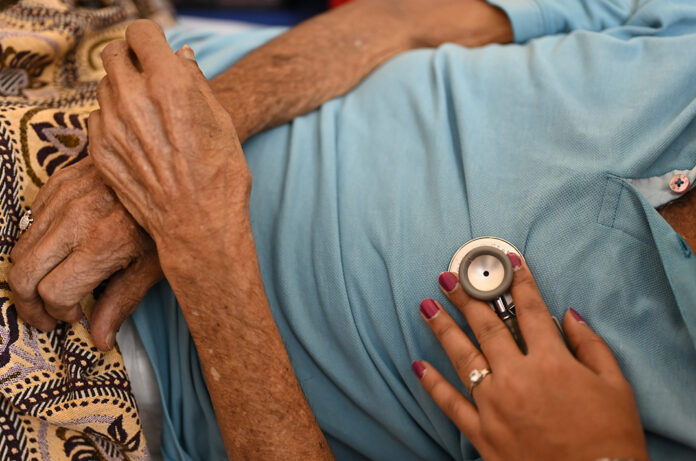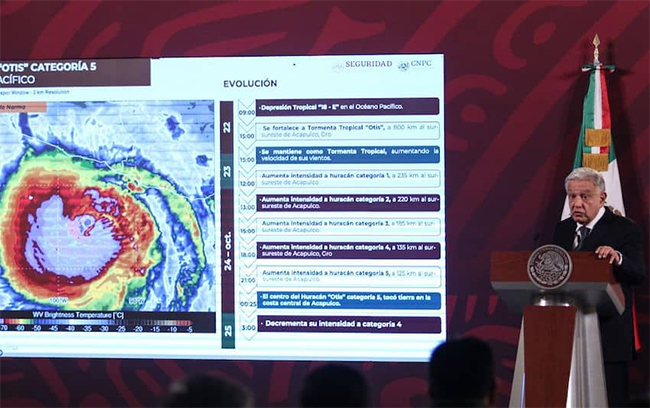by Alexei Koseff
CalMaters
Nearly two decades ago, Gavin Newsom catapulted onto the national political stage when, as mayor of San Francisco, he began issuing marriage licenses to same-sex couples. It was an act of defiance, far ahead of public opinion at the time, and so controversial that some of his fellow Democrats blamed him for costing the party the presidential election later that year.
But for Newsom, who said he was driven by a “moral obligation,” it eventually became a political calling card — validation for progressive voters of his fearless leadership and forward thinking that would be proven right by history.
Now the second-term governor is himself burdened by presidential ambitions — if not his own, then those of just about every pundit compiling a list of future Democratic contenders — and maneuvering more cautiously than he once did.
Even as he regularly rips Republicans across the country for stripping back the rights of Americans, Newsom declined several times in recent weeks to extend new protections to marginalized groups, delivering stinging legislative defeats to allies on some of the year’s most contentious issues.
Following a month-long hunger strike by supporters outside a Capitol office building, Newsom vetoed a measure that would have made California the first state in the country to outlaw caste discrimination. His rejection last month of a bill requiring judges to consider a parent’s affirmation of their child’s gender identity in custody disputes generated such an intense outcry that the governor’s office rushed out a package of new laws supporting LGBTQ rights the next day.
Assemblymember Lori Wilson, the Suisun City Democrat who carried the custody measure, Assembly Bill 957, said California is so often at the forefront of national debates that it “can be a shock to the system” when the state forgoes that leadership position.
“We are so used to, and sometimes take for granted, how often we get to be in the lead on these issues,” she said.
Entering the national stage
The “rights regression” has become one of Newsom’s regular talking points. At public events, he decries conservative efforts to roll back protections for abortion, voting access, LGBTQ people and more.
It came up at a signing ceremony last month for new gun safety laws, where the governor warned there was only so much the state could do under an assault of hostile court decisions. When he appointed Laphonza Butler, an openly lesbian Black woman, to succeed the late Sen. Dianne Feinstein earlier this month, he praised Butler as “uniquely positioned” to stand up to “this cultural purge that’s going on in this country.”
“That’s for a national stage,” where Newsom is trying to cement his place by rebranding himself as a leading defender of these rights cherished by liberal voters, said David McCuan, a political science professor at Sonoma State University.
Despite his frequent protests that he has no interest in the presidency, the increasingly national lens through which Newsom approaches his job has made it impossible not to view his actions as a potential positioning for a future campaign. The governor went on a “red state tour” earlier this year to promote Democrats in conservative communities and is preparing to debate Florida Gov. Ron DeSantis, a Republican presidential candidate, next month on Fox News.
Lawmakers and advocates are often reluctant to discuss Newsom’s intentions on the record, including several who declined to comment for this story. But the speculation has become pervasive in political circles, a nearly automatic framing for analyzing the governor’s decisions, especially on the most contentious matters.
Anthony York, a spokesperson for Newsom, said every piece of legislation is evaluated on its merits and the governor takes that process seriously. The caste discrimination and custody measures were vetoed because of specific policy concerns, he said, and do not represent any broader retreat by Newsom from his defense of civil rights.
“You have to take the bills individually,” York said. “I would argue that California continues to be a leader on protecting and expanding rights.”
Newsom signed 890 bills this year — 85% of the 1,046 measures that made it to his desk — including many that advanced liberal priorities such as abortion access, gun control and environmental protections. Some are bold new policies unique in the country, such as a requirement for large companies to disclose their greenhouse gas emissions and a ban on certain chemicals commonly used in sweets.
Yet the proposals that the governor rejects can seem more instructive about just how far he believes the country is ready for a mainstream politician to wade into unsettled and controversial issues, such as drug use. Newsom, who once led the charge for California to legalize recreational cannabis, raised some eyebrows by vetoing a bill to decriminalize magic mushrooms and other plant-based psychedelics, something voters in Oregon and Colorado have already done.
Newsom and his team “are being very cautious about not leading public opinion and getting away from the median voter,” which occasionally belies his fiery rhetoric about rights regression, McCuan said. “The danger is that it positions him as a hollow vessel.”
Navigating a South Asian schism
Activists who pushed for Senate Bill 403, which would have added caste to the list of categories in the state’s housing, education and employment discrimination laws, also wonder whether Newsom’s national ambitions derailed the measure.
The governor vetoed the bill earlier this month, calling it “unnecessary” because “discrimination based on caste is already prohibited” under existing civil rights protections — echoing a point made by some Republican opponents.
American awareness of caste — a centuries-old social hierarchy system, especially prevalent in South Asian countries such as India, where one’s employment and education opportunities are determined by birth — has been rising in recent years. A 2020 state lawsuit alleging workplace discrimination at the San Jose-based tech company Cisco against an employee of Dalit ancestry, the lowest-ranking caste, garnered national headlines. This year, Seattle and Fresno became the first two cities to ban caste discrimination.
Though SB 403 passed overwhelmingly in the Legislature and was endorsed by the California Democratic Party, it also received among the most visible opposition of the legislative session, at committee hearings and through an aggressive online campaign. This was led by South Asian groups affiliated with the Hindu nationalist movement, who argued the proposal unfairly targeted Hindus because caste is part of their religion.
“This was contentious within the South Asian community,” said Ria Chakrabarty, policy director for Hindus for Human Rights, which supported the bill.
She noted that many of the opponents, who are generally upper-caste, hold powerful positions in Silicon Valley and have more money and political access than the lower-caste supporters, who are more recent immigrants to this country. Newsom might have worried that signing the bill could put a potential fundraising pool at risk, she said.
One major Democratic bundler, Ajay Jain Bhutoria, posted online after the veto about a meeting with Newsom at a Democratic National Committee donor event in Chicago last month and thanked the governor for “listening to my recommendation to veto SB403.” Bhutoria did not respond to an interview request.
York said Newsom met with many people on both sides of the issue and no one meeting swayed his mind. The governor did not want to go down the road of explicitly stating protections that are already available under existing law, he said.
“He wrestled with the issue and we had a lot of discussions about this as a staff,” York said. “He vetoes all kinds of bills that he deems unnecessary or duplicative.”
But advocates believe that Newsom did not understand the depth of the caste problem in the United States, and why a specific new protection is necessary, because he did not hear from lower-caste people.
“If he has ambitions to run for president, he should have taken sides with the exploited,” said Karthikeyan Shanmugam, secretary of Ambedkar King Study Circle, a Bay Area group that campaigns for the end of caste oppression.
Through a representative, Sen. Aisha Wahab, the Fremont Democrat who carried the bill, declined an interview request and reiterated her initial statement about the veto, which seemed to flip Newsom’s rhetoric back at him.
“I believe our laws need to be more explicit especially in times when we see civil rights being eroded across the country,” she said. “We cannot take anything for granted.”















